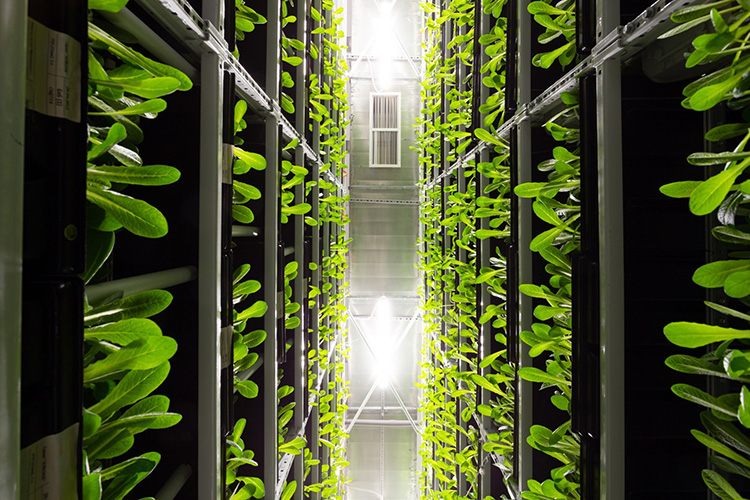Report on the Nexus of Conservation, Nutrition, and Sustainable Development Goals
Introduction: Aligning Conservation with Global Development Targets
A recent study reveals a complex relationship between biodiversity conservation efforts and local human well-being, with significant implications for achieving multiple Sustainable Development Goals (SDGs). Research conducted in Cambodia and Myanmar indicates that while protected areas are crucial for meeting SDG 15 (Life on Land), they can have unintended consequences on child nutrition, directly impacting SDG 2 (Zero Hunger) and SDG 3 (Good Health and Well-being). The findings advocate for an integrated approach to conservation that supports, rather than compromises, local food systems and health outcomes.
Key Findings and SDG Implications
Impact on SDG 2 (Zero Hunger) and SDG 3 (Good Health and Well-being)
The study establishes a direct link between proximity to protected areas and the quality of children’s diets, a critical component of SDG 2 and SDG 3.
- Dietary Diversity: The quality of children’s diets was found to increase with distance from a protected area, peaking at approximately 80 km before declining. This suggests that areas at a moderate distance, characterized by mixed land use, are most conducive to nutritional diversity.
- Vitamin A Consumption: Vitamin A, essential for child growth and immune function, is a key indicator of nutritional quality. A deficiency can lead to severe health issues, undermining progress on SDG 3. The study found that consumption of vitamin-A-rich foods was highest in specific landscape contexts.
- Indigenous Diets: In areas with Indigenous populations, children consumed more vitamin-A-rich fruits and vegetables, highlighting the importance of traditional food systems in achieving nutritional security.
The Role of the Agroecological Matrix in Achieving SDG 15 (Life on Land)
The research challenges the traditional conservation model of strictly separating human activity from protected forests. It proposes that an “agroecological matrix” is more effective for achieving both biodiversity and human development goals.
- Mixed Landscapes: The highest dietary diversity was observed in landscapes with a mix of forest cover and agriculture. This “agroecological matrix” appears to support a wider variety of food sources.
- Alternative to Land Sparing: This finding contrasts with the “land sparing” model, which advocates for separating conservation and agriculture. The results suggest that integrated landscapes can better support local populations and contribute to the sustainable management of ecosystems as outlined in SDG 15.
- Biodiversity and Food Sources: Mixed-use landscapes, which may include swiddens and home gardens, are important sources of foods like mango, sweet potato, and squash, contributing to both local diets and agrobiodiversity.
Indigenous Rights and SDG 10 (Reduced Inequalities)
The study underscores the importance of recognizing Indigenous rights within conservation frameworks to ensure equitable outcomes and advance SDG 10 (Reduced Inequalities).
- Customary Tenure: The establishment of protected areas can disrupt customary tenure systems, which are local rules and norms governing land and resource use. This disruption can negatively affect how local and Indigenous communities access food.
- Disparate Impacts: The research noted different dietary patterns in Indigenous areas, suggesting that their traditional land management practices are vital for their nutritional well-being.
- Informing Global Targets: Recognizing the role of Indigenous populations and their land use systems is critical for countries working toward the Kunming-Montreal Global Biodiversity Framework’s “30 by 30” target, which explicitly calls for respecting Indigenous rights.
Methodological Overview
- Data Source: The analysis was based on data from caregivers of 2,899 children aged 6–59 months.
- Geographic Scope: The study was conducted in communities across Cambodia and Myanmar.
- Variables Analyzed: Researchers examined children’s dietary diversity, consumption of pulses and vitamin-A-rich foods, and the distance from their community to the nearest protected area boundary.
- Control Factors: The analysis adjusted for variables including household wealth, maternal education, market access, season, and environmental factors like forest cover and rainfall.
Policy Recommendations for Integrated SDG Achievement
The study’s findings provide actionable insights for policymakers aiming to create synergy between conservation and development agendas.
- Adopt Integrated Land Use Models: Conservation strategies should move beyond strict protectionism and embrace mixed-use “agroecological matrix” approaches that support local livelihoods and food security, thereby simultaneously advancing SDGs 2, 3, and 15.
- Align Conservation and Public Health Planning: National strategies for expanding protected areas, such as those under the “30 by 30” target, must be developed in coordination with public health and nutrition authorities to mitigate negative impacts and maximize co-benefits.
- Uphold Indigenous and Local Community Rights: To achieve equitable and sustainable conservation outcomes in line with SDG 10, it is imperative to recognize and support customary tenure systems and the role of Indigenous communities as stewards of biodiversity and providers of local food.
Analysis of Sustainable Development Goals in the Article
1. Which SDGs are addressed or connected to the issues highlighted in the article?
-
SDG 2: Zero Hunger
- The article directly addresses nutrition and food access, focusing on the quality of children’s diets, specifically their consumption of vitamin-A-rich foods and overall dietary diversity. It explores how land use policies, such as the creation of protected areas, impact local food systems and nutritional outcomes for children.
-
SDG 3: Good Health and Well-being
- The research links diet quality to health outcomes. It highlights that vitamin A is essential for children’s growth and immune defense and that a deficiency can “increase the risk of illness and death” from conditions like measles and diarrheal disease, connecting conservation policy directly to public health.
-
SDG 10: Reduced Inequalities
- The study specifically examines the differential impacts on Indigenous populations. It finds that children in Indigenous areas have distinct dietary patterns and that protected areas can “disrupt that customary tenure.” The analysis calls for conservation efforts that respect and incorporate “Indigenous rights.”
-
SDG 15: Life on Land
- The core theme of the article is the relationship between “protected areas,” biodiversity conservation, and human populations. It discusses conservation strategies, the importance of forests and ecosystems, and references the UN’s Kunming-Montreal Global Biodiversity Framework’s “30-by-30 target” to conserve land and halt biodiversity loss.
2. What specific targets under those SDGs can be identified based on the article’s content?
-
Under SDG 2 (Zero Hunger):
- Target 2.1: End hunger and ensure access by all people, in particular the poor and people in vulnerable situations, including infants, to safe, nutritious and sufficient food all year round. The article’s focus on the diets of children aged 6-59 months and how proximity to protected areas affects their access to nutritious food like vitamin-A-rich fruits and vegetables directly relates to this target.
- Target 2.2: End all forms of malnutrition. The study’s investigation into vitamin A consumption is a direct engagement with this target, as vitamin A deficiency is a critical form of micronutrient malnutrition that affects children’s health and development.
-
Under SDG 3 (Good Health and Well-being):
- Target 3.2: End preventable deaths of newborns and children under 5 years of age. The article explicitly states that a lack of vitamin A can “increase the risk of illness and death” from common childhood diseases, linking nutritional outcomes from conservation policies to child mortality.
-
Under SDG 10 (Reduced Inequalities):
- Target 10.2: Empower and promote the social, economic and political inclusion of all, irrespective of origin. The article highlights how conservation policies can negatively affect Indigenous populations by disrupting “customary tenure” and calls for conservation approaches that recognize and support “Indigenous rights,” aligning with the goal of ensuring their inclusion.
-
Under SDG 15 (Life on Land):
- Target 15.1: Ensure the conservation, restoration and sustainable use of terrestrial and inland freshwater ecosystems and their services, in particular forests. The entire study revolves around the role and impact of “protected areas” and forests.
- Target 15.5: Take urgent and significant action to reduce the degradation of natural habitats, halt the loss of biodiversity. The article opens by stating that “protected areas prevent biodiversity loss,” which is the central aim of this target.
- Target 15.9: Integrate ecosystem and biodiversity values into national and local planning. The researchers’ call for conservation and public health planners to “align strategies” and for conservation planning to consider local diets is a direct application of this target. The mention of the “30-by-30 target” further emphasizes the integration of biodiversity goals into national policies.
3. Are there any indicators mentioned or implied in the article that can be used to measure progress towards the identified targets?
-
Indicators for SDG 2 (Zero Hunger):
- Dietary Diversity: The researchers explicitly “examined dietary diversity” among children. This is a direct indicator used to measure access to a variety of foods and overall diet quality.
- Consumption of specific food groups: The study measured whether children consumed “vitamin A-rich fruits and vegetables” and “pulses,” serving as specific indicators of nutritional intake.
-
Indicators for SDG 3 (Good Health and Well-being):
- Prevalence of Vitamin A Deficiency: While not measured biochemically, the consumption of vitamin-A-rich foods is used as a proxy indicator. The article also mentions health outcomes linked to deficiency, such as “night blindness” and increased risk of “measles and diarrheal disease,” which are health indicators.
-
Indicators for SDG 10 (Reduced Inequalities):
- Recognition of Indigenous Rights and Tenure: The article discusses the disruption of “customary tenure” and the need to focus on “Indigenous rights” in conservation. The legal and practical recognition of these rights serves as a key indicator of inclusion and equality.
- Disaggregated data on nutrition: The study’s comparison of dietary patterns in “Indigenous and non-Indigenous population areas” is an example of using disaggregated data to measure inequalities in outcomes.
-
Indicators for SDG 15 (Life on Land):
- Proportion of land in protected areas: The study is based on the distance from protected areas. The article also explicitly mentions the “30-by-30 target,” which aims to conserve “at least 30% of land,” making the percentage of protected land a key indicator.
- Proportion of forest cover: The researchers used forest cover as a variable, noting that at certain distances from protected areas, there was “about a third of forest cover,” indicating a mixed landscape. This is an indicator of ecosystem health and land use patterns.
4. Table of SDGs, Targets, and Indicators
| SDGs | Targets | Indicators |
|---|---|---|
| SDG 2: Zero Hunger |
|
|
| SDG 3: Good Health and Well-being |
|
|
| SDG 10: Reduced Inequalities |
|
|
| SDG 15: Life on Land |
|
|
Source: nutritioninsight.com







